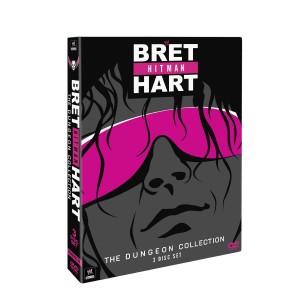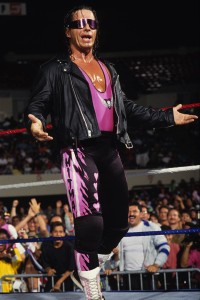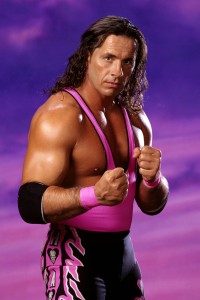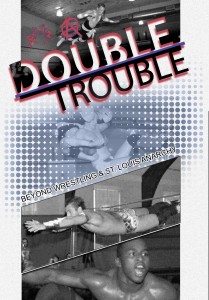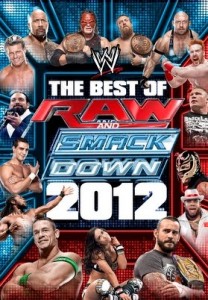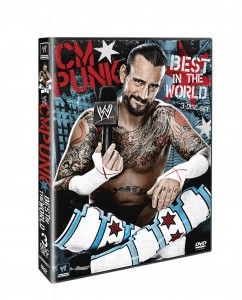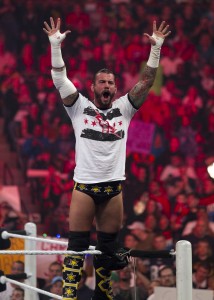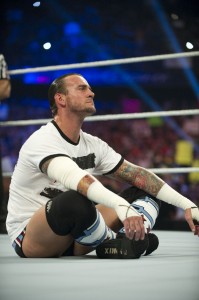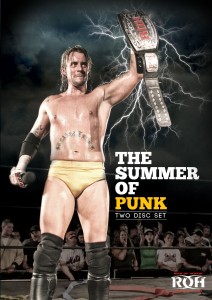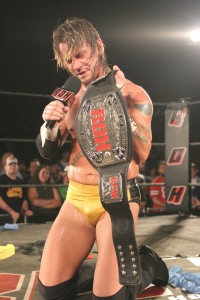It was two years ago that WWE released its three-disc The Attitude Era DVD set. Chronicling one of WWE’s most popular and successful periods, The Attitude Era features a documentary about the late ’90s/early ’00s era during which “Stone Cold” Steve Austin, The Rock and other mid-card wrestlers became mainstream superstars. It also features numerous matches and other footage that showcases the fact that stars were made during The Attitude Era not only because of their in-ring abilities, but also because of their rude and rebellious personas and over-the-top antics. If The Attitude Era was a greatest hits compilation, Attitude Era: Volume Two is the B-sides and rarities that complement the first volume.
 Initially, I was a little disappointed to discover there was no new documentary included in this second volume. Then I realized that just leaves more room for matches, which isn’t a bad thing. In place of a documentary to start things off, there’s an introduction and conclusion by Michael Cole basically welcoming you to Vol. 2, then thanking you for watching it. In between the matches some of the Attitude Era’s biggest stars discuss road stories, how their Attitude Era personas came to be and other defining elements of that time period. Particularly entertaining are Jerry “The King” Lawler discussing how he came to call the oft-exposed breasts of the divas as “puppies,” the Godfather explaining how true-to-life his pimp gimmick is (and later revealing his surprising musical tastes) and Edge recalling how unpleasant the Brood’s bloodbaths were for their opponents. For the most part, these vignettes help keep things flowing and provide some backstory for the matches that follow. There are a few instances, however, where the interviews are a bit confusing when coupled with their concurrent match selections. For example, Chris Jericho talks extensively about his 1999 WWE debut, when he interrupted The Rock on Raw, which is followed by an Intercontinental Championship defense against Kurt Angle the following year. Granted, Jericho’s WWE debut was featured in The Attitude Era DVD, but it just seems odd to have Jericho talk so passionately about that moment only to be followed by a completely different (but still impressive) match.
Initially, I was a little disappointed to discover there was no new documentary included in this second volume. Then I realized that just leaves more room for matches, which isn’t a bad thing. In place of a documentary to start things off, there’s an introduction and conclusion by Michael Cole basically welcoming you to Vol. 2, then thanking you for watching it. In between the matches some of the Attitude Era’s biggest stars discuss road stories, how their Attitude Era personas came to be and other defining elements of that time period. Particularly entertaining are Jerry “The King” Lawler discussing how he came to call the oft-exposed breasts of the divas as “puppies,” the Godfather explaining how true-to-life his pimp gimmick is (and later revealing his surprising musical tastes) and Edge recalling how unpleasant the Brood’s bloodbaths were for their opponents. For the most part, these vignettes help keep things flowing and provide some backstory for the matches that follow. There are a few instances, however, where the interviews are a bit confusing when coupled with their concurrent match selections. For example, Chris Jericho talks extensively about his 1999 WWE debut, when he interrupted The Rock on Raw, which is followed by an Intercontinental Championship defense against Kurt Angle the following year. Granted, Jericho’s WWE debut was featured in The Attitude Era DVD, but it just seems odd to have Jericho talk so passionately about that moment only to be followed by a completely different (but still impressive) match.
While the Attitude Era tends to bring to mind bikini contests, beer guzzling and politically-incorrect rebelliousness, Vol. 2 effectively illustrates that there was a lot more to it than that. Sure, this DVD set includes a couple of swimsuit/bikini contests (both of which feature a nearly-nude Sable), the sex therapy sessions of “Sexual Chocolate” Mark Henry, and two ridiculous Hardcore Championship matches featuring Gerald Brisco (one of which involves him and Pat Patterson in evening gowns, the other of which includes the use of Patterson’s poop-stained underpants as a weapon). But for every puppy reference or poop joke, there are WWE Championship matches pitting Austin against Ken Shamrock and The Rock against X-Pac, a European Championship match featuring Angle, Jericho and Tazz, and Eddie Guerrero facing Dean Malenko. In much the same way that people often forget that Extreme Championship Wrestling was more than just flaming tables and barbed-wire bats, Vol. 2 reminds us that underneath the button-pushing antics were some amazing matches involving some of the most talented grapplers in history.
While it was the T&A of Sunny, Marlena and Sable that likely attracted many new WWE viewers during the Attitude Era, the equally attractive Lita, Trish Stratus, Jacqueline and Ivory were going toe-to-toe (sometimes literally) with the likes of Triple H, The Rock and Angle. So it’s refreshing to see the in-ring talents of these women showcased towards the end of Vol. 2. Another thing that made the Attitude Era special was that even those who weren’t main eventers like Shawn Michaels, Mick Foley and the Undertaker were important parts of the show. Even if some of the multi-person matches included here seem inconsequential, it’s still good to see the contributions of Owen Hart, Gangrel, Val Venis, Al Snow, D’Lo Brown, Marc Mero, Goldust and Hardcore Holly to WWE’s success at the time. It’s this type of diversity that made the Attitude Era the most popular era in WWE history. And Vol. 2 does a good job of highlighting as much of that diversity as possible.

